Chimney sweeps: The women brushing aside stereotypes
- Published
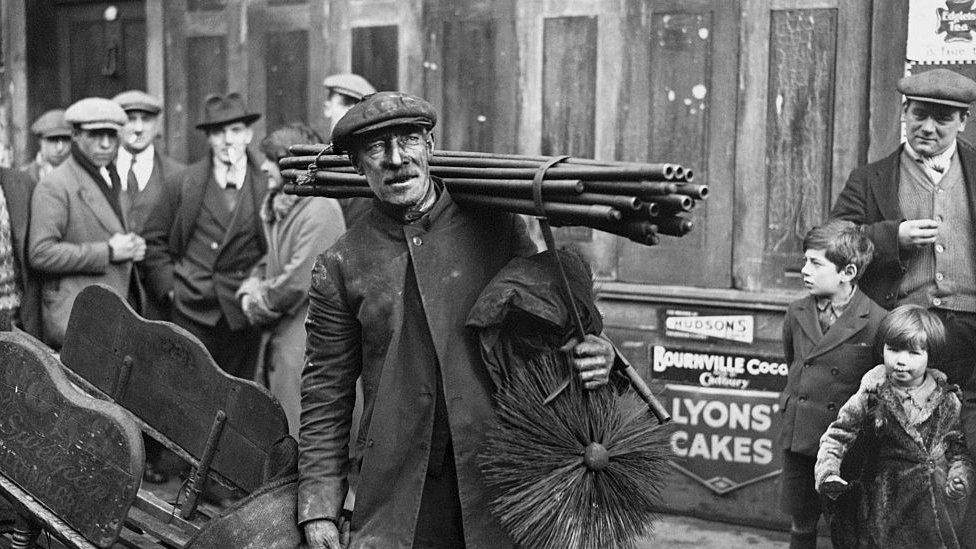
The world of chimney sweeping today is a far cry from this set-up in 1931
For many, chimney sweeping might conjure up images of Dick Van Dyke in the 1964 Disney film Mary Poppins, or Victorian urchins being sent up filthy flues.
But the business of chimney sweeping has changed: in 2019 it's far more hi-tech than simply poking brushes up chimneys - and it's not just men who are doing it.
According to the Guild of Master Chimney Sweeps, there are currently 18 female members, which represents about 4% of the total membership. In 2010, there were just three registered female chimney sweeps in Britain., external
So what is attracting women to this traditionally male-dominated trade?
'I really do enjoy it'
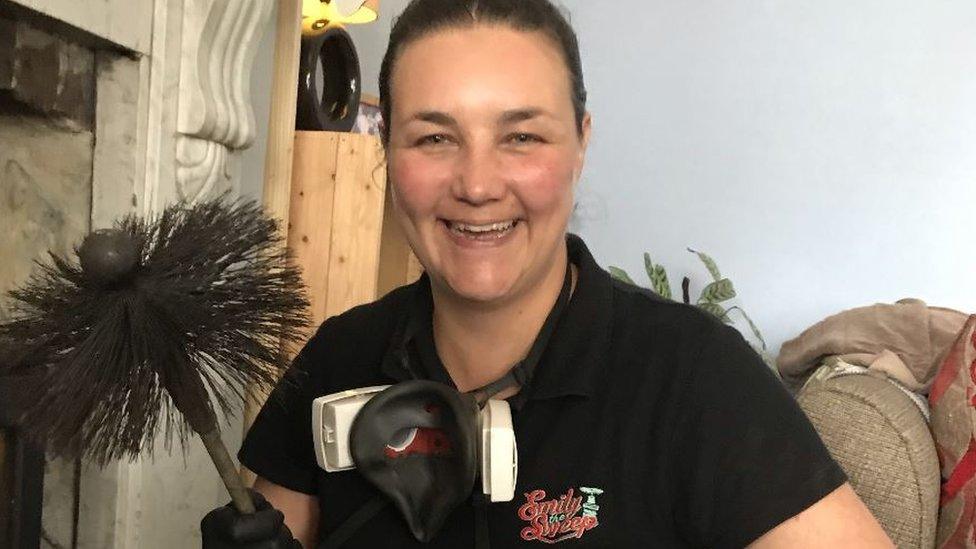
Emily Wilebore set up her chimney sweeping business in 2016, having previously worked as a youth worker
For Emily Wilebore, the only time she has experienced dubious remarks about her job is when she has been up on the roof.
"An older gentleman might walk by and look at me on the roof with the look that says: 'Should you be up there? Do you need a hand?'," she says.
"It doesn't come from a bad place, I suppose it's just unusual to see it."
"Emily the sweep" started her business in 2016, covering south Devon and east Cornwall.
"I really do enjoy it," she says.
"The only downside is it's seasonal so I need to take on extra work over the summer - it's a shame because I love my job.
"I'm really well-received by customers - especially women. They always say 'It's so unusual to see a female chimney sweep'."
Emily was working full time as a youth worker for Torbay Council when she had her own chimney swept by a woman.
After discovering she needed someone to help labour for her, Emily decided to give it a go.
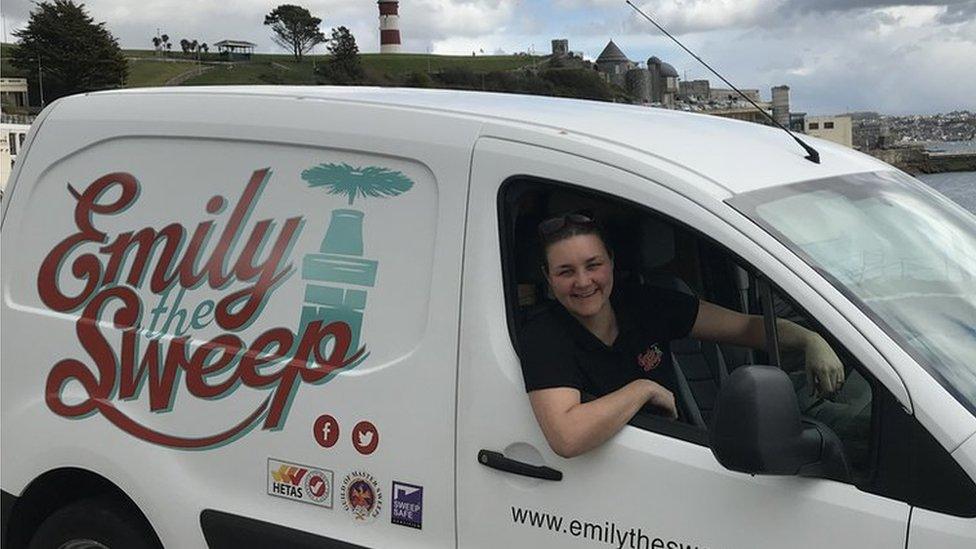
Emily says she's is "really well-received" by customers
"I was really taken aback by how brilliant and confident she was at doing it. I just needed that boost, really," Emily says.
Following that meeting, she decided to complete her own chimney sweep training and eventually set up her own business in 2016.
Emily says she has never found any "gold rings or old hip flasks" - which, in some of the older properties, servants used to hide in the chimney.
"Years ago when people were worried about spirits in the house, people sometimes used to put shoes or bits of clothing inside to ward off evil spirits.
"There's a lot of history with chimneys. It's a very old, traditional trade but it has come an awful long way.
"I think for some customers, they honestly think I'm going to turn up with an old broom handle with a brush on the end and it's not anything like that," Emily says.
"We've got cameras now and testing equipment - it really is 21st Century equipment."
'I've been completely accepted'
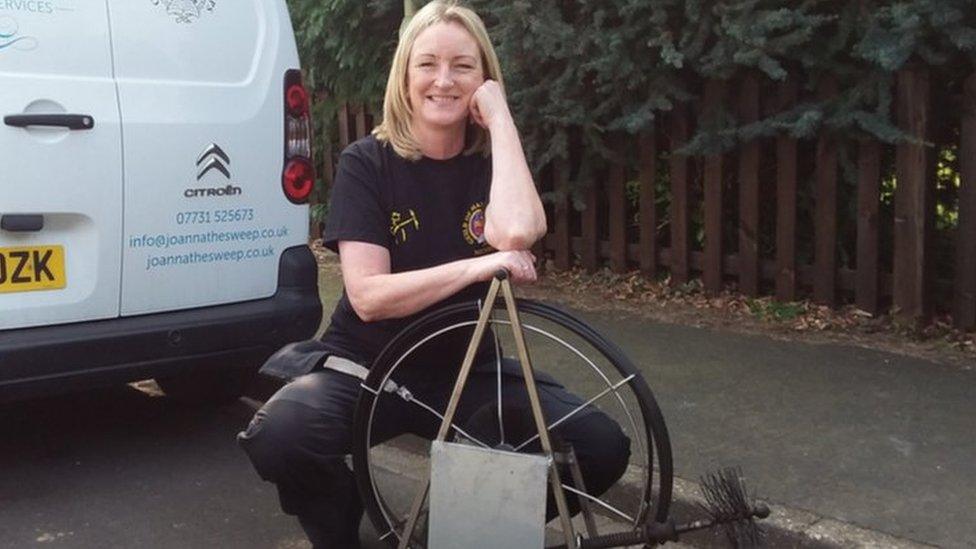
Joanna Thurgur set up her own business four years ago
"It's still unusual but we're getting there," says chimney sweep, Joanna Thurgur in regards to women working in the industry.
In 2015 she set up Joanna Thurgur Chimney Sweep Services, which covers the Hampshire area, after training with the Guild of Master Chimney Sweeps.
"I tracked down a female sweep to speak to, spent a day with my sister's lovely sweep in Bedfordshire, did lots of research and finally took the decision to go for it," she says.
"From day one at the guild, I've been completely accepted and supported. I've not had a single bad response.
"I suppose there are sweeps out there who don't like women coming into what they see as a male-dominated trade, but I certainly have never come across any."
Joanna says the day-to-day work is physically demanding, "but not to the point where it excludes all women at all".
"If you don't want to provide a service for removing birds' nests - which is hard, physical work - you can decline them," she says.
"You can tailor it to suit your abilities, strength or just what you want to do, really."
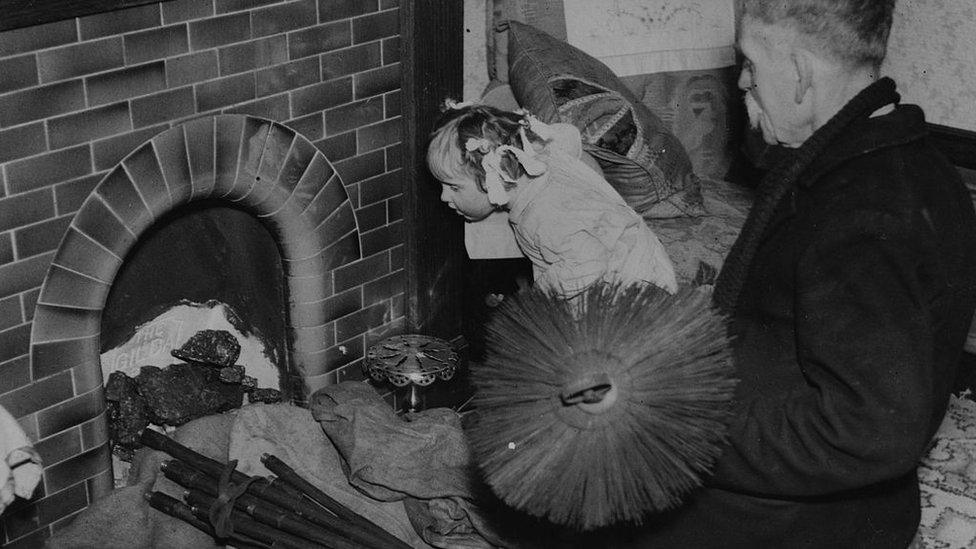
The job of a chimney sweep has largely remained the same through the years - to prevent fires in the home and to keep flues soot-free
Joanna believes more women getting involved in chimney sweeping is indicative of how it is across the trades in general.
"All of a sudden, it's permissible for a woman to enter a trade. It's not looked at quite as askew as it once was," she says.
"I have always enjoyed - almost preferred - men's company so it didn't bother me.
"I knew people would think it was odd but I've not been particularly bothered about what other people think," she adds.
Joanna also supports the government-backed Burn Right campaign, external, which seeks to educate customers about how to burn solid fuels to get better heat output, while reducing fuel use and harmful emissions.
"The job of a chimney sweep isn't just coming along and cleaning your flue, it's also very much educating people of the big push to stop pollution that the government has been looking into," she says.
"I love it. I never expected to love it as much as I did."

Chimney sweeping: A brief history

Children as young as five were sent up chimneys in the 18th and 19th Centuries
In the early 18th Century, coal became a popular substitute for burning wood in fireplaces and the job of a chimney sweep was vital to prevent fires in the home and to keep flues soot-free
Brushes with long handles were used to dislodge the soot, but when some crevices were too hard to reach this way, small children would be sent up the narrow flues
Some of these children were as young as five and sweeps often used the services of street children in exchange for food and shelter
In 1864, an Act of Parliament outlawed using children to climb chimneys
The modern chimney sweep uses camera equipment to detect flue damage
A 21st Century sweep will often educate customers about fuel efficiency in a bid to reduce harmful emissions

'I became a sweep after 20 years in accountancy'
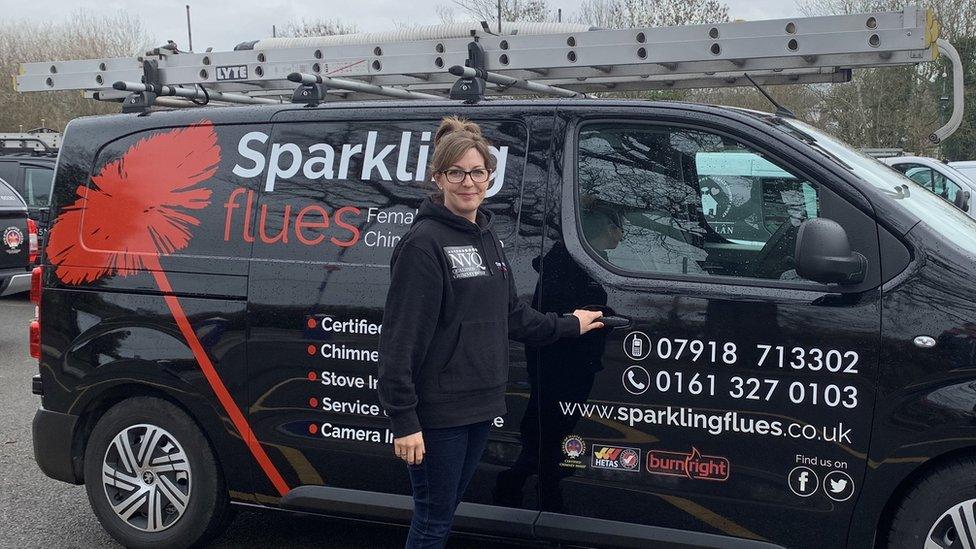
Emma Roddy "fell in love" with chimney sweeping after watching her husband work in the industry
Emma Roddy, from Manchester, set up her own chimney sweep business, Sparkling Flues, in 2015.
After 20 years in the finance industry, she got to a point where she was "looking for something different".
"My husband was in the chimney-sweeping industry and I fell in love with the projects he was on. I fell in love with the industry," she says.
"I was looking for a change having worked in accountancy since I was a teenager.
"Now, I absolutely love it and wouldn't change it."
She agrees the traditional image of a chimney sweep is of a man, but has never been bothered by this.
"I set it as a challenge, to be honest, because it's mainly male-dominated. I just found there was definitely a unique market there for the female," she says.
You may also like:
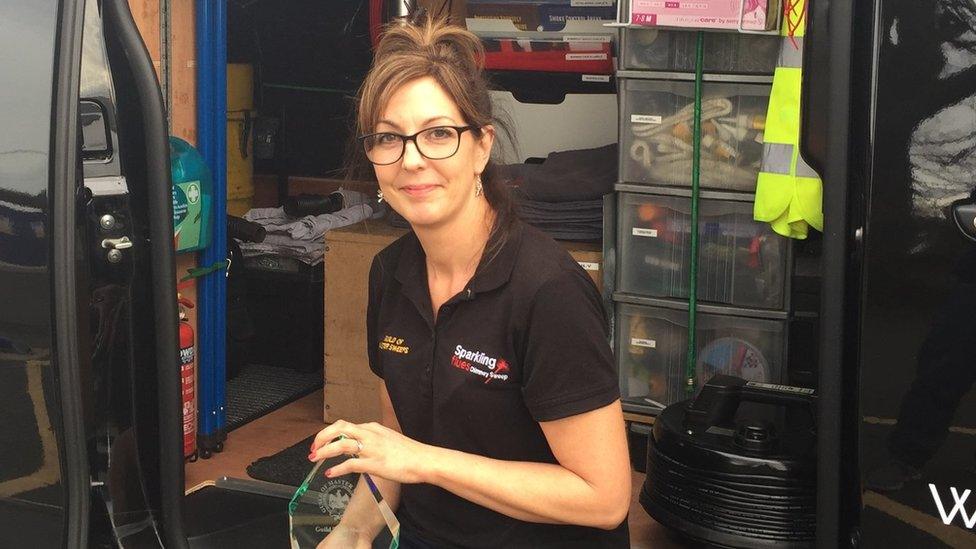
Emma Roddy won the "Best Van" award at the Guild of Master Chimney Sweeps' trade show
Emma trained with the Guild of Master Chimney Sweeps and is now a trainer for the association.
She has also recently completed a NVQ for chimney sweeping in the construction industry and says she was proud to win the "best van" award at the guild's trade show in March - long gone are the days when a chimney sweep would be seen cantering across town in a horse and cart.
Emma says she would encourage any women - but particularly young women - to join the industry.
"It is challenging and it can be physical but don't let that put you off. Don't let the males put you off.
"I've had a couple of negative comments doing my rounds and from a couple of chaps within the industry, but I don't have any regrets and I love it every day."
- Published26 July 2013
.jpg)
- Published17 September 2010
